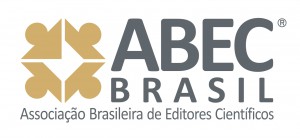Validation of two clinical scenarios for simulation-based learning for the prevention and control of healthcare-associated infections
DOI:
https://doi.org/10.5216/ree.v24.70072Keywords:
Infection Control, Simulation Training, Validation Study, Health Education, NursingAbstract
Objective: to validate clinical scenarios for simulation-based learning on the prevention and control of healthcare-associated infections. Methods: a methodological study of elaboration, content validation of two simulated clinical scenarios, and evaluation of the simulation design. Specialists (n=10) analyzed the scope, clarity, and relevance of the scenarios, and 44 undergraduate nurses evaluated the design using the Simulation Design Scale. Descriptive statistics, Content Validity Index, and Content Validity Ratio were used for analysis. Results: the items in the scenario presented a content validity index ≥ 0.8 and a content validity ratio predominantly ≥ 0.8. The scale presented an average of 4.7±0.2, indicating the adequacy of the scenarios by the participants of the simulation. Conclusion: the validation allowed the achievement of adequate quality of the proposed scenarios, which can be widely used for teaching infection prevention and control.
Downloads
References
Haque M, Sartelli M, McKimm J, Abu Bakar M. Health care-associated infections - an overview. Infect Drug Resist. 2018;11:2321-2333. doi: 10.2147/IDR.S177247
Siegel JD, Rhinehart E, Jackson M, Chiarello L, and the Healthcare Infection Control Practices Advisory Committee. 2007 Guideline for Isolation Precautions: Preventing Transmission of Infectious Agents in Healthcare Settings. 2022 [cited 2022 Dec 28]. Available from: https://www.cdc.gov/infectioncontrol/guidelines/isolation/index.html
Maroldi MAC, Felix AMS, Dias AAL, Kawagoe JY, Padoveze MC, Ferreira SA, et al. Adherence to precautions for preventing the transmission of microorganisms in primary health care: a qualitative study. BMC Nurs. 2017;16:49. doi: 10.1186/s12912-017-0245-z
Agência Nacional de Vigilância Sanitária. Medidas de Prevenção de Infecção Relacionada à Assistência à Saúde [Internet]. Brasília: ANVISA; 2017 [cited 2022 Dec 28]. Available from: https://www.gov.br/anvisa/pt-br/centraisdeconteudo/publicacoes/servicosdesaude/publicacoes/caderno-4-medidas-de-prevencao-de-infeccao-relacionada-a-assistencia-a-saude.pdf
Massaroli A, Martini JG, Moya JLM, Pereira MS, Tipple AFV, Maestri E. Competências para enfermeiros generalistas e especialistas atuarem na prevenção e controle de infecções no Brasil. Rev Lat Am Enfermagem. 2019;27:e3134. doi: 10.1590/1518-8345.2620.3134
World Health Organization, Regional Office for Europe. Simulation in nursing and midwifery education [Internet]. Copenhagen: World Health Organization; 2018 [cited 2022 Dec 28]. Available from: https://apps.who.int/iris/handle/10665/345156
Watts PI, McDermott DS, Alinier G, Charnetski M, Ludlow J, Horsley E, et al. Healthcare Simulation Standards of Best PracticeTM Simulation Design. Clinical Simulation in Nursing. 2021;58:14-21. doi: 10.1016/j.ecns.2021.08.009
Kang M, Nagaraj MB, Campbell KK, Nazareno IA, Scott DJ, Arocha D, et al. The role of simulation-based training in healthcare-associated infection (HAI) prevention. Antimicrob Steward Healthc Epidemiol. 2022;2(1):e20. doi: 10.1017/ash.2021.257
Souza RS, Oliveira PP, Dias AAL, Simão DAS, Pelizari AEB, Figueiredo RM. Prevention of infections associated with peripheral catheters: construction and validation of clinical scenario. Rev Bras Enferm. 2020;73(5):e20190390. doi: 10.1590/0034-7167-2019-0390
Carvalho LR, Zem-Mascarenhas SH. Construção e validação de um cenário de simulação sobre sepse: estudo metodológico. Rev. esc. enferm. USP. 2020;54:e03638. doi: 10.1590/S1980-220X2019021603638
Jeffries PR, Rodgers B, Adamson K. NLN Jeffries Simulation Theory: Brief Narrative Description. Nurs Educ Perspect. 2015;36(5):292-3. doi: 10.5480/1536-5026-36.5.292
Coluci MZO, Alexandre NMC, Milani D. Construção de instrumentos de medida na área da saúde. Ciênc. saúde coletiva. 2015;20(3):925-36. doi: 10.1590/1413-81232015203.04332013
Waxman KT. The development of evidence-based clinical simulation scenarios: guidelines for nurse educators. J Nurs Educ. 2010;49(1):29-35. doi: 10.3928/01484834-20090916-07
Lewis KL, Bohnert CA, Gammon WL, Holzer H, Lyman L, Smith C, et al. The Association of Standardized Patient Educators (ASPE) Standards of Best Practice (SOBP). Adv Simul. 2017;2:10. doi: 10.1186/s41077-017-0043-4
Almeida RGS, Mazzo A, Martins JCM, Pedersoli CE, Fumincelli L, Mendes IAC. Validation for the portuguese language of the Simulation Design Scale. Texto contexto - enferm. 2015;24(4):934-40. doi: 10.1590/0104-0707201500004570014
Flausino DA, Oliveira AR, Misko MD, Eduardo AHA. Cenário para treinamento por simulação sobre comunicação de notícias difíceis: um estudo de validação. Esc. Anna Nery. 2022;26:e20210037. doi: 10.1590/2177-9465-EAN-2021-0037
Brasil GC, Ribeiro LM, Mazzo A, Almeida RGS, Martins JCA, Fonseca LMM, et al. Utilização de escalas de design e autoconfiança na avaliação da simulação realística materno-infantil. Revista de Enfermagem Referência. 2018;serIV(19):117-25. doi: 10.12707/RIV18025
Lawshe CH. A quantitative approach to content validity. Personnel Psychology. 1975;28:563-75. 10.1111/j.1744-6570.1975.tb01393.x
Al Khasawneh E, Arulappan J, Natarajan JR, Raman S, Isac C. Efficacy of Simulation Using NLN/Jeffries Nursing Education Simulation Framework on Satisfaction and Self-Confidence of Undergraduate Nursing Students in a Middle-Eastern Country. SAGE Open Nurs. 2021;7:23779608211011316. doi: 10.1177/23779608211011316
Conselho Regional de Enfermagem do Estado de São Paulo (COREN-SP). Manual de Simulação Clínica para Profissionais de Enfermagem. São Paulo; 2020.
Mirza N, Cinel J, Noyes H, McKenzie W, Burgess K, Blackstock S, et al. Simulated patient scenario development: A methodological review of validity and reliability reporting. Nurse Educ Today. 2020;85:104222. doi: 10.1016/j.nedt.2019.104222
Negri EC, Pereira Júnior GA, Cotta Filho CK, Franzon JC, Mazzo A. Construction and validation of simulated scenario for nursing care to colostomy patients. Texto contexto - enferm. 2019;28:e20180199. doi: 10.1590/1980-265X-TCE-2018-0199
Rocha LAC, Gorla BC, Jorge BM, Afonso MG, Santos ECN, Miranda FBG. Validação de cenários simulados para estudantes de enfermagem: avaliação e tratamento de Lesão por Pressão. Rev. Eletr. Enferm. 2021;23:67489. doi: 10.5216/ree.v23.67489
Souza AC, Alexandre NMC, Guirardello EB. Propriedades psicométricas na avaliação de instrumentos: avaliação da confiabilidade e da validade. Epidemiol. Serv. Saúde. 2017;26(3):649-59. doi: 10.5123/S1679-49742017000300022
Roh YS, Jang KI, Issenberg SB. Nursing students’ perceptions of simulation design features and learning outcomes: The mediating effect of psychological safety. Collegian. 2021;28(2):184-9. doi: 10.1016/j.colegn.2020.06.007
Downloads
Published
Issue
Section
License
Copyright (c) 2022 Revista Eletrônica de Enfermagem

This work is licensed under a Creative Commons Attribution 4.0 International License.














